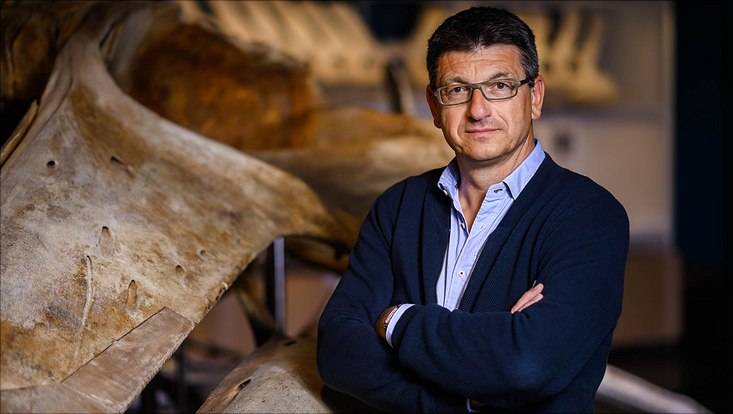CeNak will become part of the new Leibniz institute for the analysis of the evolution of biodiversity.“The way is clear for a new Hamburg natural museum of history”
26 June 2020, by Christina Krätzig

Photo: Sebastian Engels
Today, the Joint Science Conference (Gemeinsame Wissenschaftskonferenz, GWK) decided to merge the Center of Natural History (CeNak) at Universität Hamburg and the Zoological Research Museum Alexander Koenig in Bonn. At the beginning of 2021, they should form a new Leibniz institute for the analysis of the evolution of biodiversity.
Dr. Glaubrecht, today an important decision was made regarding CeNak. Does this decision mean that Hamburg will definitely get a new natural history museum?
Yes, Hamburg will get an innovative research museum in the field of natural history. Today’s decision clears the way, and further steps are already being drafted. Now, the project has to be incorporated into Hamburg’s budget. At the same time, we need to move forward in the next 2 years with concrete plans for the location and construction. We are planning an international architectural competition and are already working on a scenographic concept. Ideally, we will have a new museum building in 6 to 7 years, where something like the proposed Evolutioneum will be housed.
Along with CeNak, Universität Hamburg will also lose its natural history collections. Should we still be happy about the Joint Science Conference’s decision?
Yes, of course! Because the University’s valuable natural history collections are in no way being lost! In the future, they will be suitably housed and much better handled. The study of biodiversity will be closely linked with the University, especially via the professorships that will continue to be situated at Universität Hamburg.
What are the scientific benefits of the merger?
The Leibniz institute for the analysis of the evolution of biodiversity will become Germany’s third-largest research museum, in which extant collections and key research areas in Hamburg and Bonn will complement one another wonderfully and will be further developed. We Hamburgers will be bring our impressive, large collections along, while our colleagues in Bonn will contribute their expertise in molecular and genetic biodiversity research. Moreover, with the Evolutioneum, we will finally create a showcase for the science concerned with the disappearance of species and species evolution—one of the most significant issues of the twenty-first century.
What will the future cooperation between CeNak and the Zoological Research Museum Alexander Koenig in Bonn look like exactly? The partners are, of course, geographically separated.
At its core, the new Leibniz institute to analyze the evolution of biodiversity will consist of 3 research centers and 1 transfer center—each of which will have offices in both Hamburg and Bonn. These centers will all focus on our joint key research areas. Of course, coordination and communication will pose a challenge. But thanks to the possibilities that we all have had a chance to test on a daily basis in recent months, I am confident that it will work—like in big companies with several locations.
See the press release “Hamburg bekommt ein neues Naturkundemuseum” for details and views on the Joint Science Conference’s decision
Joint Science Conference
The Joint Science Conference coordinates the joint academic funding of the federal and state governments Members of the Joint Science Conference include the science and finance ministers at federal and state levels.


